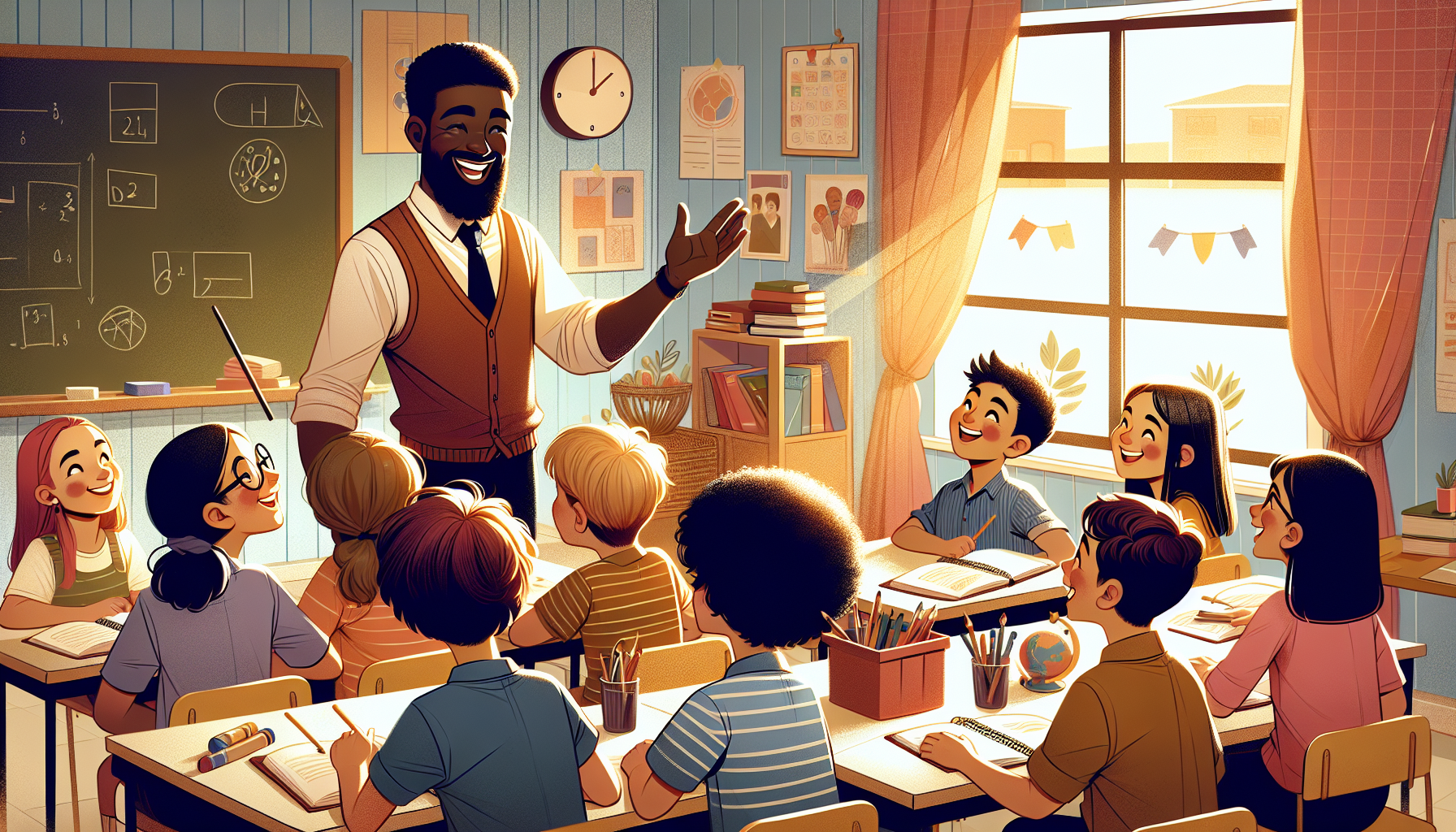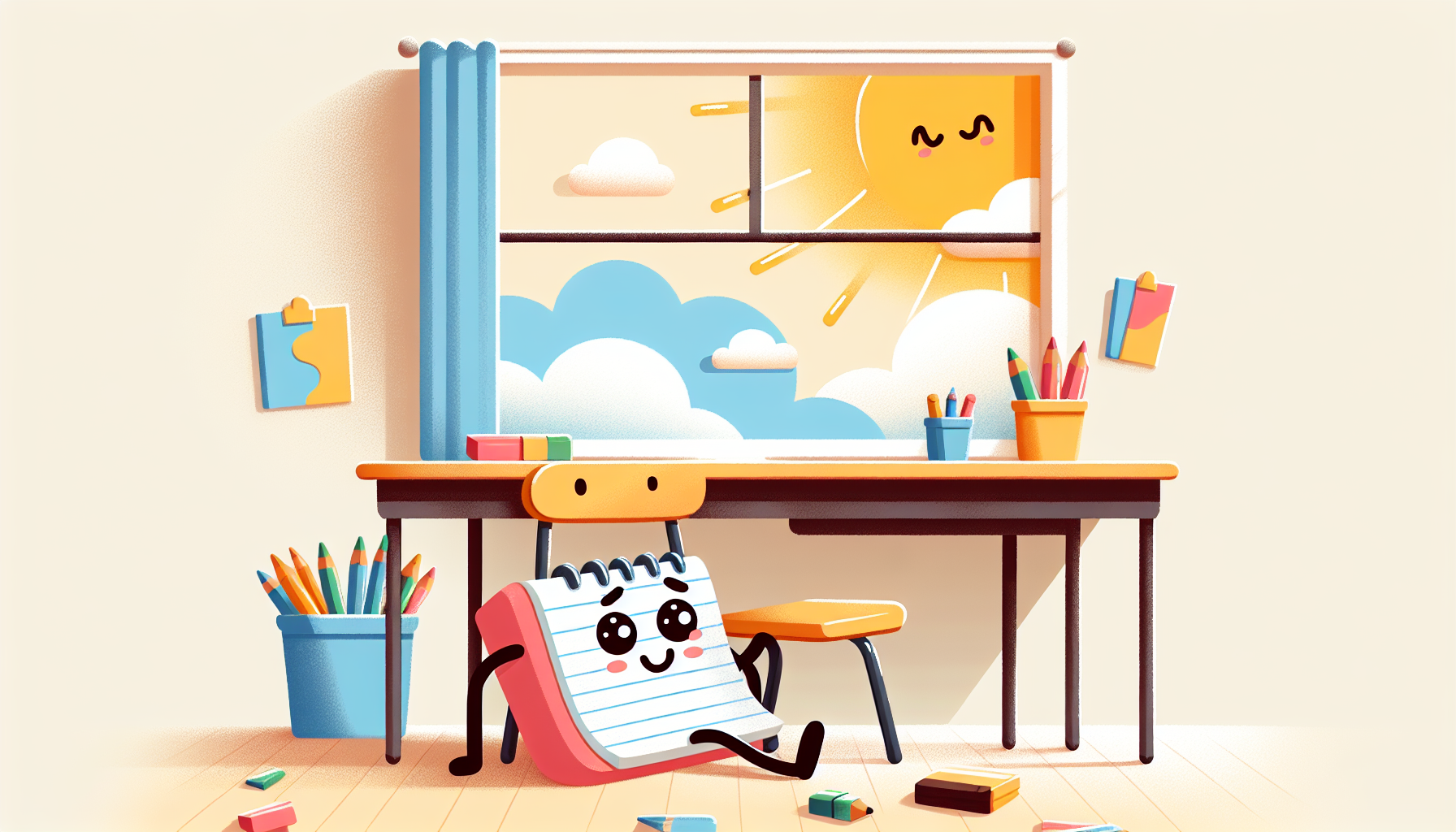We all know how tough it can be to keep students engaged in their learning. Whether it’s the distractions of modern technology or the simple fact that some subjects just don’t grab their interest, turning up the excitement in the classroom can feel like an uphill battle. It’s totally normal to feel a bit overwhelmed when trying to keep the spark alive!
But what if I told you there’s a fun way to change that? Stick around, because I’m about to share some amazing ChatGPT prompts that can breathe new life into your teaching methods. These prompts can help captivate your students’ attention and get them actively participating in their learning journey.
From interactive activities to personalized feedback, I’ll guide you through creative ideas that cater to different learning styles. Let’s dive into making learning not just effective, but genuinely enjoyable for everyone involved!
Key Takeaways
- Engagement is crucial for learning; ChatGPT prompts can help capture student interest.
- Create interactive quizzes, real-world projects, and debate topics to promote discussion.
- Use ChatGPT for fun activities like scavenger hunts and team projects to encourage collaboration.
- Generate personalized feedback and writing prompts to support individual student growth.
- Create study questions and gamified learning experiences to enhance retention and motivation.

Effective ChatGPT Prompts for Boosting Student Engagement
Engaging students is essential for effective learning, and using ChatGPT can make a big difference. With the right prompts, you can spark interest and maintain attention in your classroom. Here are some effective ChatGPT prompts to help boost student engagement.
1. “Create a fun quiz about [topic] that encourages group discussions.” This prompt can generate an interactive quiz that makes students work together while learning important material.
2. “List three real-world applications of [subject matter] that can be used in a classroom project.” Engaging students with real-world relevance is a great way to keep them interested in their studies.
3. “Generate debate topics related to [specific theme] to help students explore different perspectives.” This encourages critical thinking and enables students to articulate their views in a safe, classroom environment.
By incorporating such prompts, you’ll foster an engaging and interactive atmosphere that keeps students excited about learning.
Using ChatGPT to Create Interactive Learning Activities
Interactive learning activities help students absorb information better and foster collaboration. ChatGPT excels at creating activities that promote engagement through interactivity.
1. “Design a scavenger hunt centered around [subject] with clues that require problem-solving.” This prompt can help you create an exciting way for students to learn while moving around the classroom.
2. “Outline a team-based project where groups create a presentation on [topic] and compete for the best idea.” Use this to promote friendly competition and teamwork, making learning a more dynamic experience.
3. “Generate a list of roles for a classroom simulation about [historical event or scientific principle].” Acting out these roles can deepen students’ understanding of complex concepts and historical contexts.
With these prompts, educators can seamlessly harness ChatGPT to make their teaching more interactive and engaging.
Prompts to Encourage Student Participation in Discussions
Classroom discussions are a great way to enhance communication skills among students. Using ChatGPT to generate discussion prompts can significantly increase participation.
1. “Ask students to share their opinions on [controversial issue] and explain their reasoning.” This encourages students to articulate their views and engage in meaningful conversations.
2. “Generate questions that connect [topic] to real-life experiences students might relate to.” When students see how topics apply to their lives, they’re likelier to engage in discussions.
3. “Create a role-playing scenario related to [topic] where students must argue different perspectives.” This prompt will help students learn to listen, debate, and appreciate various viewpoints.
With these discussion prompts, teachers can create a lively dialogue in their classrooms that boosts student interaction and critical thinking.
How to Use ChatGPT for Personalized Feedback for Students
Personalized feedback is crucial for student growth. ChatGPT can aid teachers in providing tailored comments that cater to individual student needs.
1. “Generate feedback for a student who struggled with [specific assignment], highlighting strengths and areas for improvement.” This delivers constructive criticism and encouragement tailored to the student’s performance.
2. “Create a list of goal-oriented suggestions for a student interested in improving their writing skills.” This helps foster a growth mindset, showing students how to build on their abilities.
3. “Provide a summary of feedback for a group project focusing on teamwork and collaboration.” This approach emphasizes group dynamics and how each member contributed to the overall success.
By implementing these personalized feedback prompts, teachers can enhance student learning and foster a positive educational environment.

Fun and Creative Writing Prompts for Student Projects
Writing can be a delightful journey when students are given the right prompts to spark their creativity. ChatGPT can help generate writing prompts that lead to exciting projects.
1. “Write a short story from the perspective of an inanimate object in your classroom.” This encourages students to think creatively and explore narrative styles.
2. “Compose a letter to your future self outlining your dreams and goals.” This helps students reflect on their aspirations and practice letter writing.
3. “Create a poem that incorporates at least five random objects in your room.” This adds an element of fun while encouraging poetic expression.
4. “Develop a script for a scene in a movie based on a historical event.” This engages students with history while honing their screenwriting skills.
5. “Write a diary entry from the point of view of a character in your favorite book.” This prompt can deepen their understanding of character development and perspective.
These prompts not only make writing enjoyable but also help students delve into critical thinking and storytelling techniques.
Ways to Generate Study Questions with ChatGPT
Creating effective study questions is key in preparation for exams and improving retention. ChatGPT can easily assist in generating tailored study questions for various subjects.
1. “Devise a list of multiple-choice questions based on the main concepts from [specific chapter or topic].” This format helps in reinforcement of key ideas in a structured manner.
2. “Generate open-ended questions that encourage critical thinking about [subject].” Such questions stimulate inquiry and deeper understanding.
3. “Create true/false statements related to [topic] for quick revision.” This is a fun and quick way for students to test their knowledge before exams.
4. “List five discussion questions that can stimulate a study group for [specific subject].” This encourages group collaboration and different viewpoints.
5. “Generate flashcard questions based on [key terminology or concepts].” Flashcards are a great way for students to self-test and reinforce learning.
By utilizing these prompts, students can create comprehensive and engaging study materials to enhance their exam readiness.
Prompts for Gamifying Learning Through ChatGPT
Gamification in education is a fantastic way to boost motivation and make learning fun. With the help of ChatGPT, you can easily create entertaining prompts.
1. “Create a quiz game based on [subject] that includes points for correct answers and bonus rounds for challenges.” This adds a competitive element to learning.
2. “Generate a ‘Choose Your Own Adventure’ story related to [topic], where choices lead to different educational outcomes.” This captivates students and allows them to take part in their learning process.
3. “Design a classroom bingo game where students fill in squares based on learning milestones.” This encourages goal-setting and participation in activities.
4. “Outline a scavenger hunt for the classroom or school where each clue is a question related to [topic].” This gets students moving and learning simultaneously.
5. “Create a simulated stock market game where students can buy and sell stocks based on economic principles learned in class.” This enables practical applications of their studies.
With these prompts, educators can effectively gamify their lessons and keep students engaged through fun and interactive learning experiences.

Incorporating ChatGPT for Group Collaboration Ideas
Group collaboration can elevate learning by fostering teamwork and communication among students. ChatGPT can help you to create engaging collaboration prompts that inspire group projects.
1. “Generate a collaborative project where students must research [topic] and create a shared digital presentation.” This encourages students to work together while leveraging technology.
2. “Design a group debate where each member represents a different viewpoint on [subject], culminating in a class discussion.” This format helps students practice expressing diverse opinions.
3. “Create a brainstorming session prompt where students can contribute ideas for a community service project related to [issue].” This engages students in real-world issues and promotes civic responsibility.
4. “Outline a peer review process where students provide feedback on each other’s work focusing on [assignment type].” This builds critical thinking and constructive criticism skills.
5. “Develop a role-playing game where each student assumes a specific role related to a historical event and works towards a common goal.” This brings historical contexts alive while promoting collaboration.
These prompts can significantly enhance group dynamics and student interaction during collaborative activities.
Tips for Using ChatGPT to Support Diverse Learning Styles
Supporting diverse learning styles is crucial in any classroom setting. By utilizing ChatGPT, teachers can cater to various preferences and needs among their students.
1. “Create visual aids or infographics summarizing [topic] for visual learners.” This is particularly helpful for students who grasp concepts better with visuals.
2. “Generate auditory activities, such as podcasts or discussions about [theme], to assist auditory learners.” This allows students to engage with the material through listening.
3. “Design hands-on activities related to [subject] that kinesthetic learners can actively participate in.” Kinesthetic learners thrive on interaction and movement.
4. “Develop a differentiated instruction plan that includes various learning modalities for [topic].” This ensures every student has an opportunity to learn in their preferred style.
5. “Summarize key concepts from [lesson] in different styles, such as a poem, a story, and a lecture.” This approach showcases the same content in diverse formats.
These strategies can ensure that all students receive the support they need to succeed in their learning journeys.
Prompts for Art and Creativity Projects with ChatGPT
Art and creativity help develop students’ imagination and expression. ChatGPT can provide prompts that spark creativity in various artistic projects.
1. “Create a project plan where students design a mural depicting [theme or message] relevant to their community.” This engages students with local culture and arts.
2. “Generate a list of unconventional materials students can use to make sculptures representing [subject].” This encourages innovative thinking and resourcefulness.
3. “Develop an art critique format where students share and discuss their artwork based on [criteria].” This enhances evaluative skills while fostering dialogue.
4. “Outline a collaborative art exhibition where students’ works focus on [theme] and are displayed in the school.” This builds community and gives students a platform for their talents.
5. “Generate prompts for a creative photography project where students capture images based on [topic].” This taps into visual storytelling and enhances photographic skills.
Using these prompts can bring excitement and depth to art-related lessons while developing students’ creative competencies.
FAQs
ChatGPT can create interactive prompts that stimulate discussions, generate relevant questions, and provide personalized feedback, all of which encourage students to actively participate and engage with the learning material.
ChatGPT can produce interactive activities such as quizzes, role-playing scenarios, and problem-solving tasks, which not only enhance understanding but also make learning fun and engaging for students.
ChatGPT can cater to diverse learning styles by creating tailored content that appeals to visual, auditory, and kinesthetic learners, ensuring each student can engage with material in a way that suits them best.
ChatGPT can provide imaginative prompts such as storytelling based on a specific theme, writing from the perspective of an inanimate object, or creating alternate endings to well-known tales, fostering creativity in student writing.
